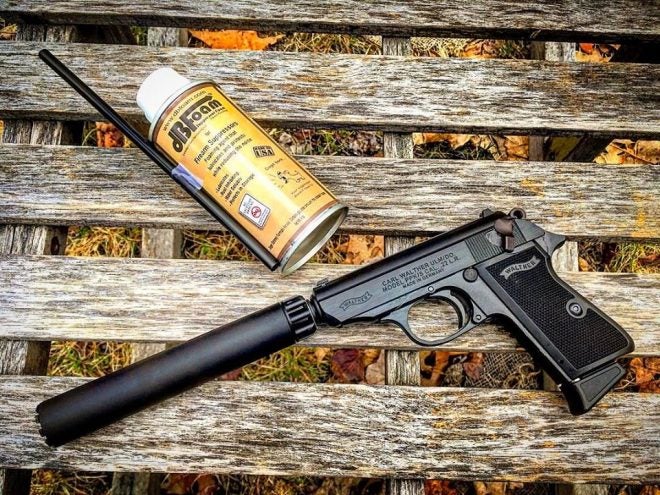Hello, my name is Pete, and I like to chase decibels. What’s that, you ask? Simply put, It’s the process of attempting to shoot a silencer and host combination as quietly as possible. Obviously, buying and using a quality suppressor is a good place to start, but other variables like ammunition selection and action type are also going to be the key to quiet success. But, as I mentioned in the original post about Inland Manufacturing’s dB Foam, there are other techniques to squeeze every bit of acoustic performance out of your silencer.
We left off a few weeks ago discussing the use of ablative media in silencers to reduce first round pop (FRP) and overall sound reduction. Some of the more common liquids used to “run wet” include water, wire pulling gel, soda and saliva. Of course, our super-intelligent readers (you’re welcome) chimed in with atypical materials like peanut butter and packing grease. And while those last two suggestions seem a little strange, they have two common features that could actually make them a good choice as an ablative: a gel-like form and a noncorrosive composition that make for a quality media.
The last two characteristics are touted by Inland’s dB Foam product.
So, the big question is, does it work?
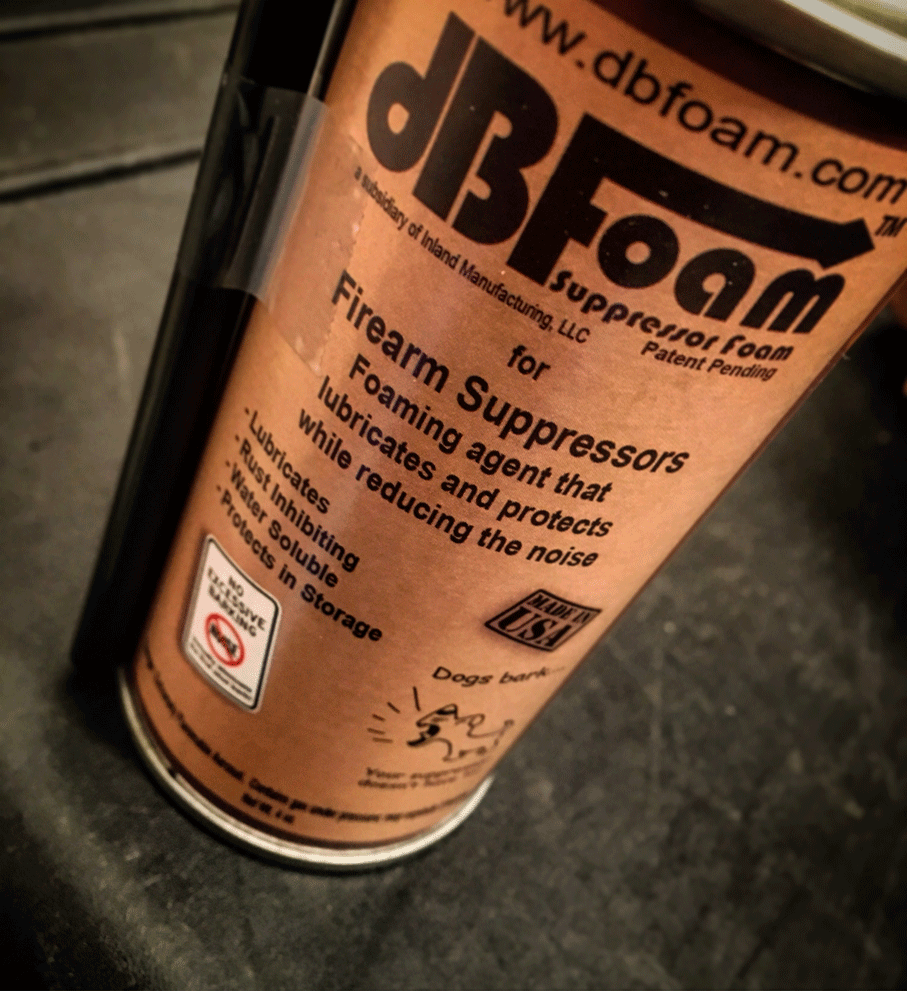
Introduction:
As I do with all of my reviews, let’s start off with a few ground rules. First off, I am not a suppressor god. There are numerous experts out there that surpass my knowledge of suppressing gunfire. I’m also not a chemist, engineer or materials scientist. So don’t expect a chemical breakdown and analysis of the dB Foam.
Having said all that, I can offer you solid insight into the pros and cons of the real-world performance of this specific ablative material. Does it offer additional suppression? Is it worth the price tag? Does it work as advertised?
Enough of all the caveats, let’s get lathered up.
The first property I wanted to test was environmental stability. Inland claims that dB Foam will last up to six months in a properly stored silencer. For long term storage, they do suggest using a foam ear plug to seal up the end cap of the suppressor.
However, I wanted to actually observe the foam’s stability without having to disrupt its physical state by breaking down the suppressor. So I sprayed about a ping pong ball sized dollop on some aluminum foil, placed it in a dark, cool closet and checked on it at different intervals.
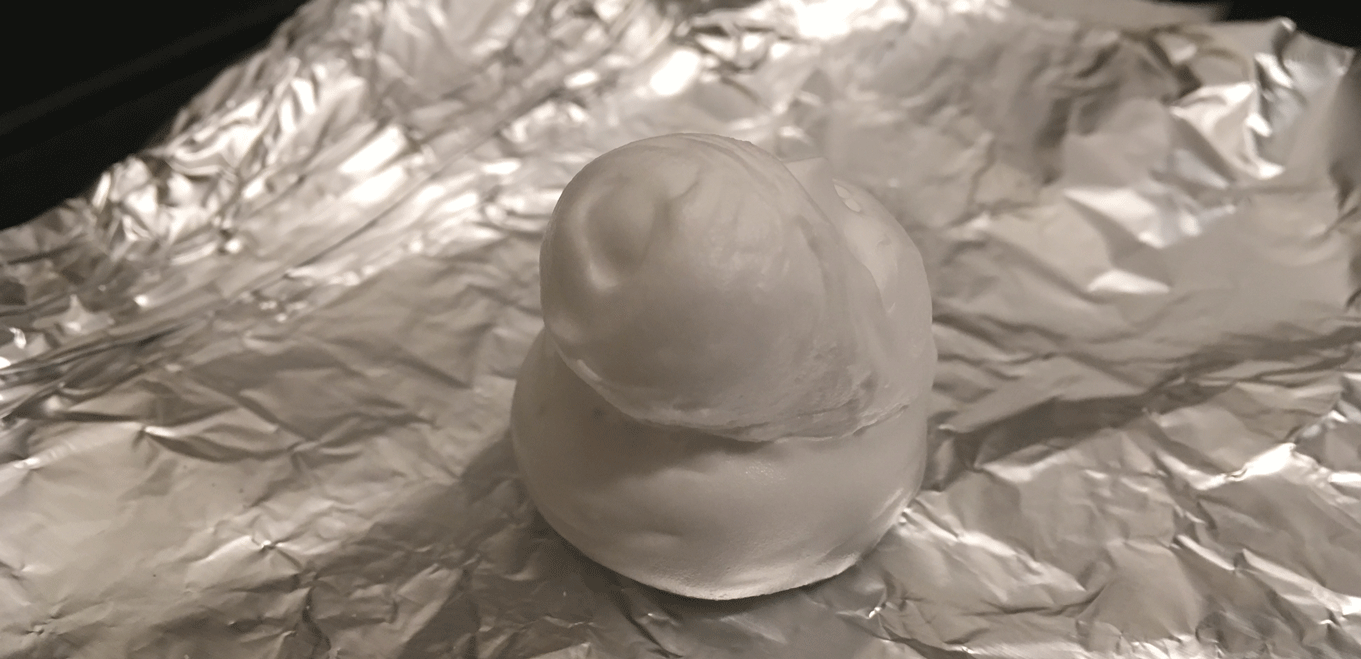
Initial application.
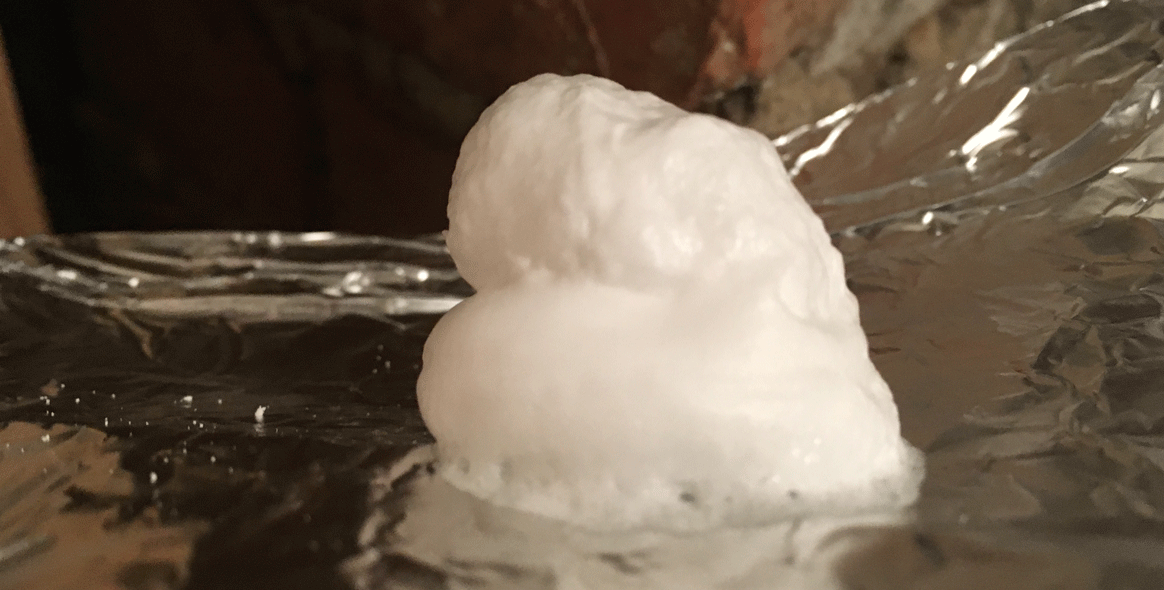
Three hours later.
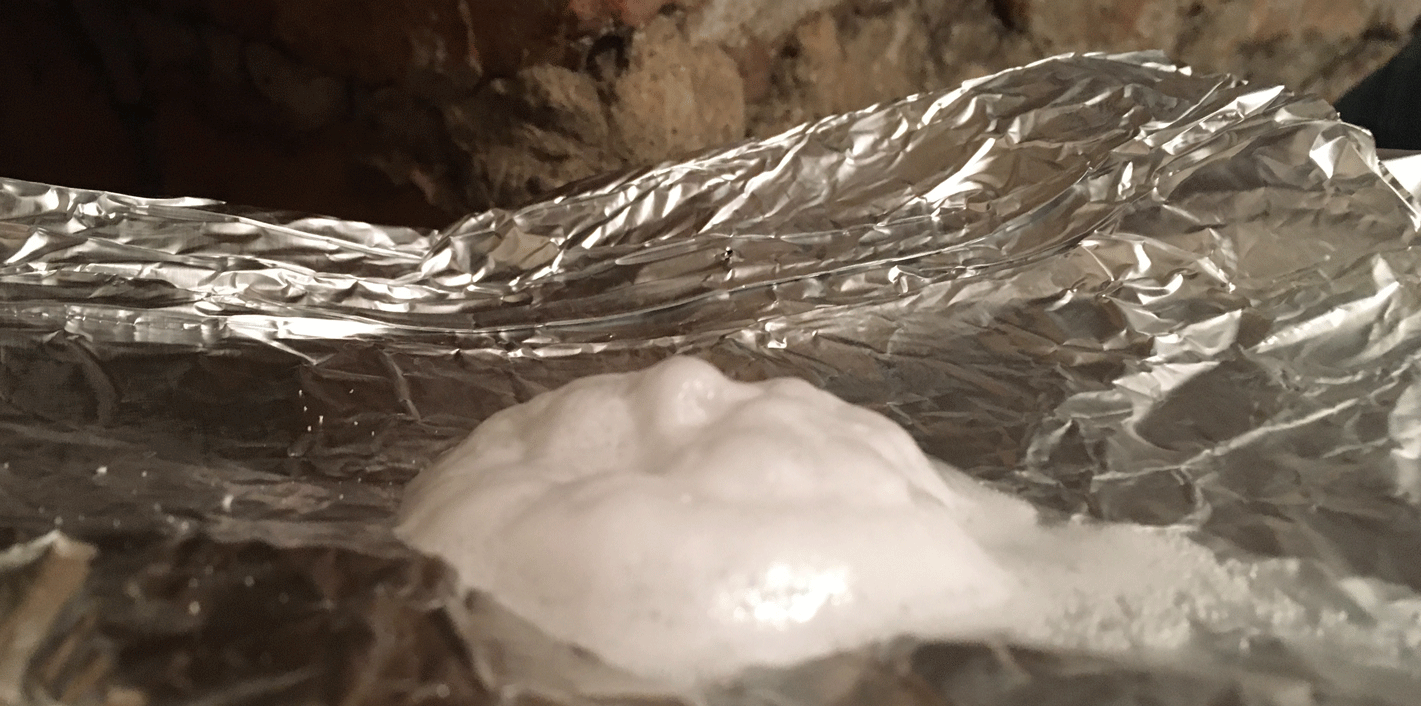
Three days later.
While the dB Foam did collapse a bit under its own weight, it held together relatively well. My guess is that when applied to the inside of a suppressor in the correct quantities and sealed up between the host firearm and an ear plug, it would survive a few months of storage. Six months seems aggressive, but I have no actual data to refute Inland’s claims.
The foam itself is basically odorless with a light oily texture It is sticky enough to where it doesn’t move when I tried to shake it off and turn it upside down.
Anyway, let’s get the foam outside for some trigger time.

Observations:
As you should do with every product you buy, take the time to read the label or instruction manual. While the directions do outline foam application techniques for when the silencer is mounted to the gun, I can’t recommend this practice due to safety concerns.
In short, use the applicator tube to fill the silencer use you withdraw it from the bore. One annoyance here is that the provided tube is a larger diameter than the 22LR bore of the silencer I was using for the testing. Instead, I just placed the nozzle directly on the end cap opening and sprayed until the foam was visible in the direct thread mount.


It only took between one and two seconds of spray to fill up my SilencerCo Warlock II rimfire silencer with foam. I then mounted the silencer onto the host, a Walther PPK/22, and loaded up a variety of ammunition into a single magazine (hat tip to TFBTV’s James Reeves’ recent video).

I fired ten shots into a berm about three feet away. All of the shots were ultra-Hollywood quiet that brought a smile to my face. I loaded up another ten rounds and fired again at the same pace. Still silly quiet. After another ten round volley, the sound started to return to a typical level for a dry silencer.
My standard ablative media, wire pulling gel, can get a bit messy after a magazine or two. Depending on the amount used, the blowback starts to show around the action. But with the dB Foam, the standard application did not produce the same mess as it’s water-based gel counterpart.

I stay ‘standard’ application for a reason: I decided to go “off-label” and break a few of the printed guidelines. The first was to overfill the suppressor with foam to see how it affected performance. While the sound reduction stayed the same, the mess level increased.
The second deviation I tried was the application of foam while the silencer was still warm/hot. Like whip cream on hot fudge, the dB Foam melted into a liquid in short order. Shooting 22LR with the ablative in liquid form had a slight but noticeable effect on performance. An unscientific nod to the foam abilities from Inland.

After my rimfire experimentation, I did try some subsonic 9mm in a Glock/SilencerCo Octane 45 combination (not pictured). And while the dB Foam was still effective, the performance was harder to discern from my standard wire pulling gel. The foam also did not last as long in the 9mm host/silencer combination, running about 8-10 rounds before returning to dry levels.
In either case, I didn’t observe an extra ordinary amount of smoke or particulates when shooting with the dB Foam. Sure, there’s a bit of a cloud, but nothing over what a normal layer of wire pulling gel or petroleum jelly.
Cleaning the notoriously dirty rimfire silencer after about 200 rounds while using the dB Foam revealed little difference from shooting with either wire pulling gel or no ablative at all. It could be that the cleaning benefits of Inland’s ablative only show up at the 1000-2000 round mark – a normal maintenance regimen.
I plan on running a follow-up article with some direct comparisons with other ablative media as well as a long term cleaning and residue study when using the foam exclusively for a set period of time.
Conclusions:
So, does it work? I’m happy to say that the dB Foam is not snake oil: it works well as an ablative media, especially when shooting .22LR. But the real selling point is the long-term storage state of the foam inside the silencer and the leak/drip resistance as opposed to its liquid counterparts.
However, there are a few considerations to take into account. First, the foam costs two to three times more than buying wire pulling gel. Also, you need to wait for your silencer to cool before reapplying the foam. Otherwise, it melts into a liquid and can drip into holsters, bags or cases. However, that characteristic is standard with most other ablative materials.
While I was impressed with the performance of the foam, its is obviously not a magic bullet. If you decide to pick some up, enjoy it for what it is – an easy to apply foam that prevents first round pop and provides added signature reduction over a “dry” suppressor. The benefit over a liquid appears to come from the fact that the foam expands into all the baffle sections.
PROS:
- Stable for long term storage
- Very quiet
- Lasts for 20-30 rounds in a rimfire application
- Expands to fill the entire suppressor
CONS:
- More expensive than other options
- Silencer needs to cool before reapplication
Inland Manufacturing dB Foam (From Website):
dB Foam, when used as directed is safe to use with most firearm suppressor designs and will significantly reduce the sound level of firearm suppressors. Independent testing using a variety of commercial suppressor designs averaged a 3-5 dB reduction with 10 shot strings of fire utilizing MIL-STD-1474E sound level testing procedures. The most significant reduction when using dB Foam was found with the first shot fired with dB reduction in some cases that exceeded 10 dB.
dB Foam has been formulated to maintain the foam consistency for up to 6 months of storage. This attribute will provide the great sound reduction when utilizing the suppressor for hunting and tactical applications.
dBFoam displaces water and provides rust inhibiting protection for the internals of your suppressors and firearms. dB Foam is water soluble, simply wash your suppressor in warm water and wipe dry after use.
dB Foam Lubricates as it protects. dB Foam provides a lubricating film that protects the internal components of suppressors with rust inhibiting properties. Residue that is blown back into the firearm action from the backwash of the suppressor will provide the same protection to the firearm bore and action.
MSRP: $29.95.00-16 oz / 19.95-4 oz
 Your Privacy Choices
Your Privacy Choices
